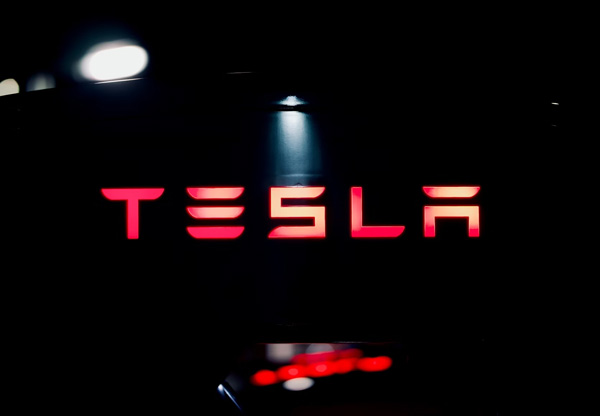Tesla moves to phase out China-made parts from U.S. factories

[Tesla logo. Photo credit to Unsplash]
Tesla has begun directing its suppliers to phase out China-made components from vehicles produced in the United States, a move that could make the company’s American-built cars more domestically sourced than ever before.
According to The Wall Street Journal, Tesla has already substituted several China-origin parts and intends to complete the transition within the next two years.
The reported move comes amid ongoing tariff uncertainty between Washington and Beijing.
US-China tariffs influence corporate supply chain strategies primarily because the increased costs and unpredictability associated with these tariffs force businesses to diversify suppliers, relocate production, and build more resilient networks to mitigate risk and maintain competitiveness.
Sources familiar with the matter told the publication that Tesla has gradually increased North American sourcing since the pandemic disrupted global supply chains.
A Reuters summary of the WSJ report noted that Tesla and its suppliers aim to swap the remaining China-made components for parts manufactured elsewhere within one to two years.
As of press time, Tesla has not responded to Reuters’ request for comment, and the report could not be independently verified.
Executives across the automotive sector have struggled with tariff fluctuations during the ongoing U.S.-China trade dispute, complicating vehicle pricing and long-term planning.
If Tesla completes its transition, analysts anticipate that U.S.-made models such as the Model 3 and Model Y will become even more heavily sourced from North America, although it is unclear whether this shift will affect future pricing.
Tesla’s decision mirrors an industry-wide reassessment of supply chains, as automakers brace for potential changes in tariffs, semiconductor availability, and access to rare-earth materials.
Tensions between the United States and China have pushed car companies into near-constant “triage mode,” with Tesla being one of the manufacturers shifting sourcing strategies to reduce vulnerability.
The publication also noted that global supply chain disruptions during the pandemic accelerated Tesla’s pivot away from China-based suppliers and reinforced the company’s interest in regionalizing its production ecosystem.
Tesla is not the only major automaker adjusting its China exposure.
General Motors recently issued a directive instructing thousands of suppliers to remove China-origin components from their supply chains.
Stellantis, a multinational automotive manufacturer formed in 2021, has also implemented strategies this year to avoid new tariffs imposed under the Trump administration, highlighting a broader push by automakers to secure more resilient sourcing networks.
A similar shift was reported earlier this year, when Tesla asked suppliers of products such as printed circuit boards, displays, and electronics control units to begin producing components outside China and Taiwan.
Meanwhile, Tesla’s China-made vehicle sales recently declined 9.9 percent year-over-year in October, according to data from the China Passenger Car Association.
Production of the Model 3 and Model Y from Tesla’s Shanghai plant dropped 32.3 percent month-over-month, including exports.
Industry leaders are rethinking long-standing supply links to China as tariffs, chip supply concerns, and material shortages continue to inject uncertainty into manufacturing plans.
Analysts note that U.S. automakers are increasingly pursuing diversified sourcing strategies to avoid sudden policy swings during President Trump’s current term, which has been marked by abrupt tariff announcements and shifting trade priorities.
For Tesla, the transition away from China-based components reflects both competitive considerations and risk mitigation efforts as U.S. factories move toward deeper localization.
Industry analysts expect Tesla to continue restructuring its supply chain over the next two years, with the pace of change likely shaped by tariff developments, material constraints, and broader geopolitical trends.

- Yeojun Jung / Grade 10
- Chadwick International School

![THE HERALD STUDENT REPORTERS [US]](/assets/images/logo_student_us.png)
![THE HERALD STUDENT REPORTERS [Canada]](/assets/images/logo_student_ca.png)
